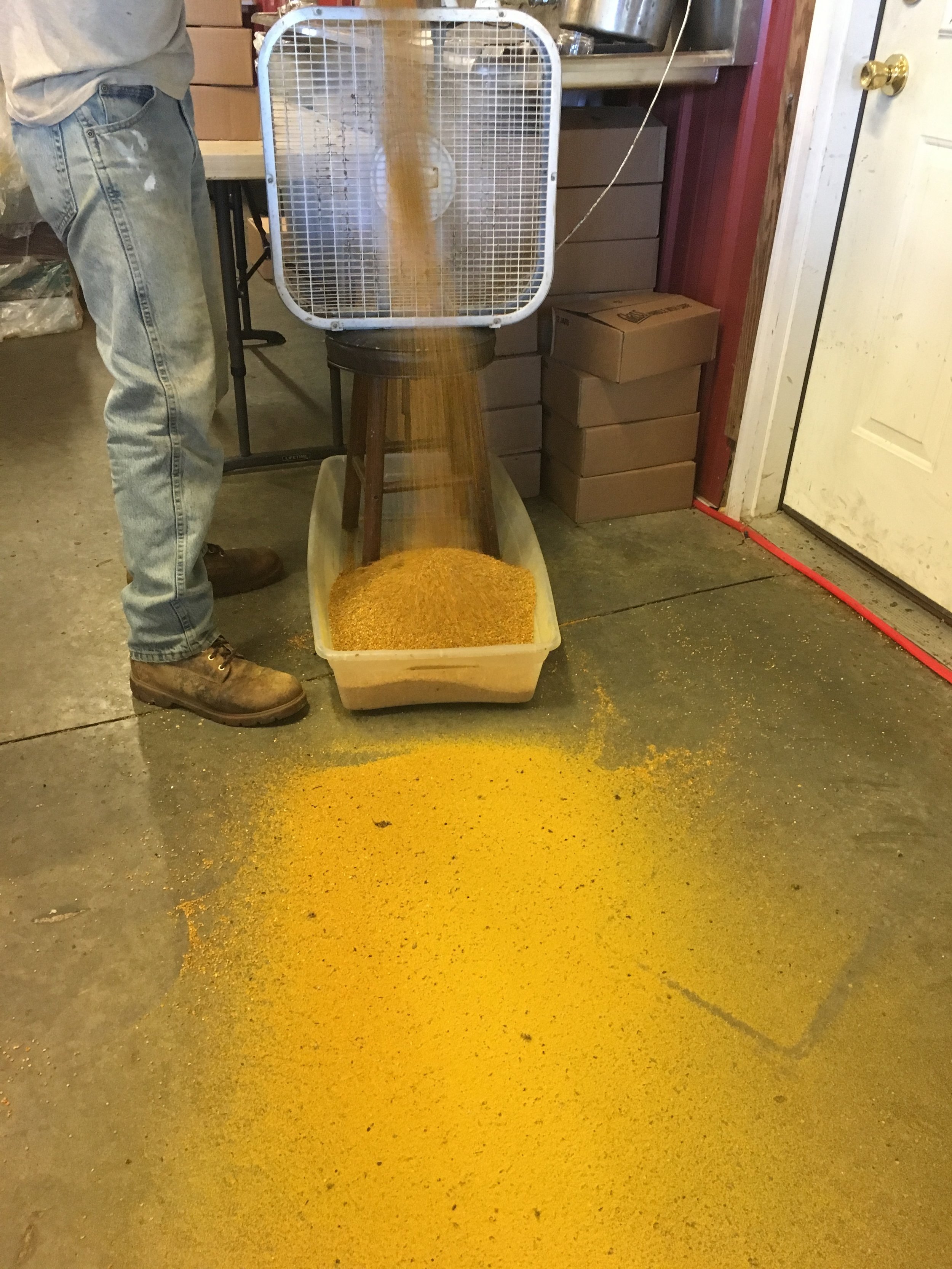Bee Pollen- the hard part
Jayne Barnes
-Posted by Isaac
Yes, we're still talking about pollen. And like it or not, we'll be on the pollen train for another week. I still need to tell you about all the benefits to this awesome superfood. Just you wait.
But for now, we're going to go over the in-between steps.
The bees take care of step 1:
And at the end, usually I take care of the getting-it-to-the-store step:
Hmmm... choices, choices...
This is not the last step, mind you. That's up to you: the putting-it-in-your-smoothie step.
This post is about the hard part of bee pollen- all the in-betweens. For this, we have some wonderful employees.
Last week we talked about the trapping part. We're just about done with my favorite part of the pollen season. When the goldenrod is in full swing, the bees hammer down. The pollen all turns a brilliant orange and the traps need to be emptied every other day or they'll overfill.
As I said last week, after the trapping and collecting, the pollen goes into the freezer and just sits there.
It could sit for days or months. When it comes time for the drying and the cleaning, back into the daylight it comes. I try to find pollen from the first few weeks and mix it with the later goldenrod. This diversifies the colors, the floral sources and, I think, the health benefits.
The pollen sits on the drying racks for about a day. These are simply screens with a fan blowing from below. Room temperature, and a dehumidifier are all that's needed.
We dry the pollen because it just wouldn't be shelf stable at room temperature. It would quickly mold. But it doesn't need over-dried. If you've ever tasted pollen and it crunches like grape nuts, that's too dry!
Once dry (enough), we run the pollen in front of a fan several times. This gets rid of the dust, a few bees' wings, and some of the smaller ants. There are commercial cleaners that do this, but why buy a commercial cleaner when you've got Mr. Blair?
The dust is saved and later fed back to the bees in the form of protein patties. We'll usually fill four or five buckets a year.
The next part of the equation happens once a week, usually on Friday morning: in comes our master pollen cleaner, Jeanne Brigner. Jeanne is a retired elementary school teacher, so she now puts her acquired patience and mental fortitude toward another demanding and very tedious task:
They make commercial pollen cleaners to do this job also, but nothing can get it as clean as Jeanne with three hours and a pair of tweezers. I'm not lying. The machines just can't compete with a patient pair of human eyes. There are bee parts, hive beetles, ants and pollen clumps to contend with. Jeanne sorts through it all and bottles the final product.
At this point, the pollen is shelf stable. It's fine for months at room temperature, but we only keep a few out for the coming week's markets.
Most goes back into the freezer to preserve freshness.
Between the comb honey, chunk honey and pollen, our freezer space is in high demand this time of year. By mid-October, we'll have four deep freezers filled.
And little by little throughout the year, the orders will come in, and those freezers will slowly empty.
Next week is the easy part-- the benefits of bee pollen. Why do we go to such lengths to obtain this rare superfood? You'll be soon to know! I'm already researching this, and my excitement is growing. Stay tuned!












